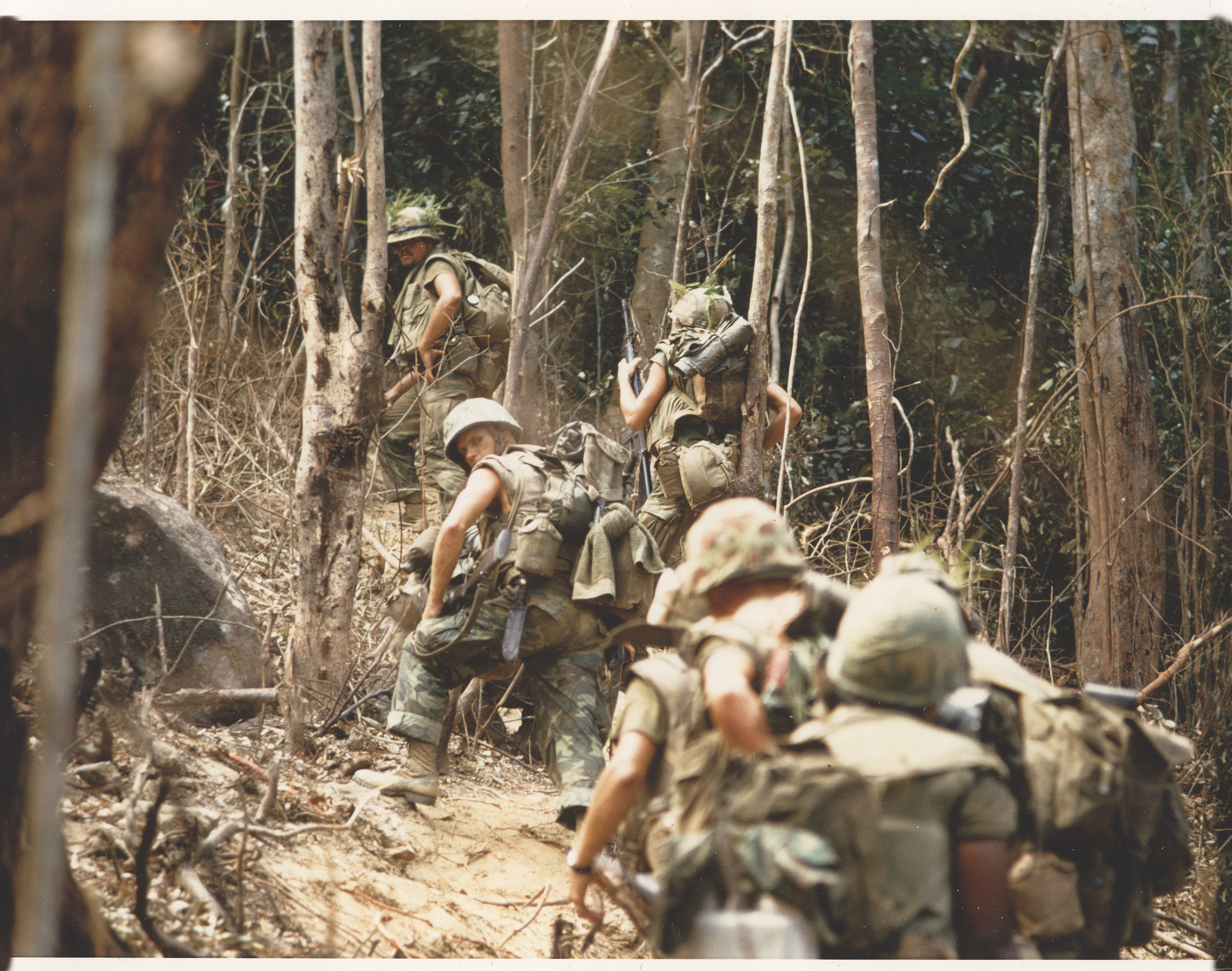Got firepower? Well, then use it!
As far back as the American Revolution, when British regulars haughtily dismissed the Continental Army, foreign adversaries have questioned the fighting ability of the American soldier. In Vietnam, the U.S. military’s extensive use of firepower encouraged a new generation of skeptics to speculate how the average American “grunt”—Army and Marine infantrymen—would have fared against the Viet Cong and North Vietnamese Army without heavy artillery and air support.
Enemy forces beaten back by U.S. firepower tried to make the case that Americans relied on the might of their weapons because U.S. grunts lacked the skills and courage to achieve battlefield victories on their own. In William Broyles Jr.’s “The Road to Hill 10: A Veteran’s Return to Vietnam,” a 1985 article in The Atlantic, an unidentified communist veteran said Americans were “afraid to leave their base, their helicopters, their artillery.”
Similarly, an early Viet Cong assessment of American troops stated that Americans had “no spirit of combat” and always depended “on modern weapons so they lose initiative and self-confidence,” as quoted in Otto Lehrack’s The First Battle: Operation Starlite and the Beginning of the Blood Debt in Vietnam. Gen. Van Tien Dung, chief of the North Vietnamese General Staff, argued that American troops, “when deprived of the fire support provided by aircraft, armoured cars and artillery, are not better, even worse, than puppet [South Vietnamese] soldiers.” Dung added that his troops, though “inferior in firepower,” were superior in fighting spirit and combat ability.
Dung’s deputy, Gen. Vuong Thua Vu, echoing his boss, denigrated U.S. combat troops in David Maraniss’ acclaimed book, They Marched into Sunlight. “Their basic fighting methods are the following: Seek ways to quickly get away from liberation troops and determine enemy and friendly lines in order to call for help from air and artillery units,” he wrote. “This is a very monotonous and outmoded fighting method of a cowardly but aggressive army.”
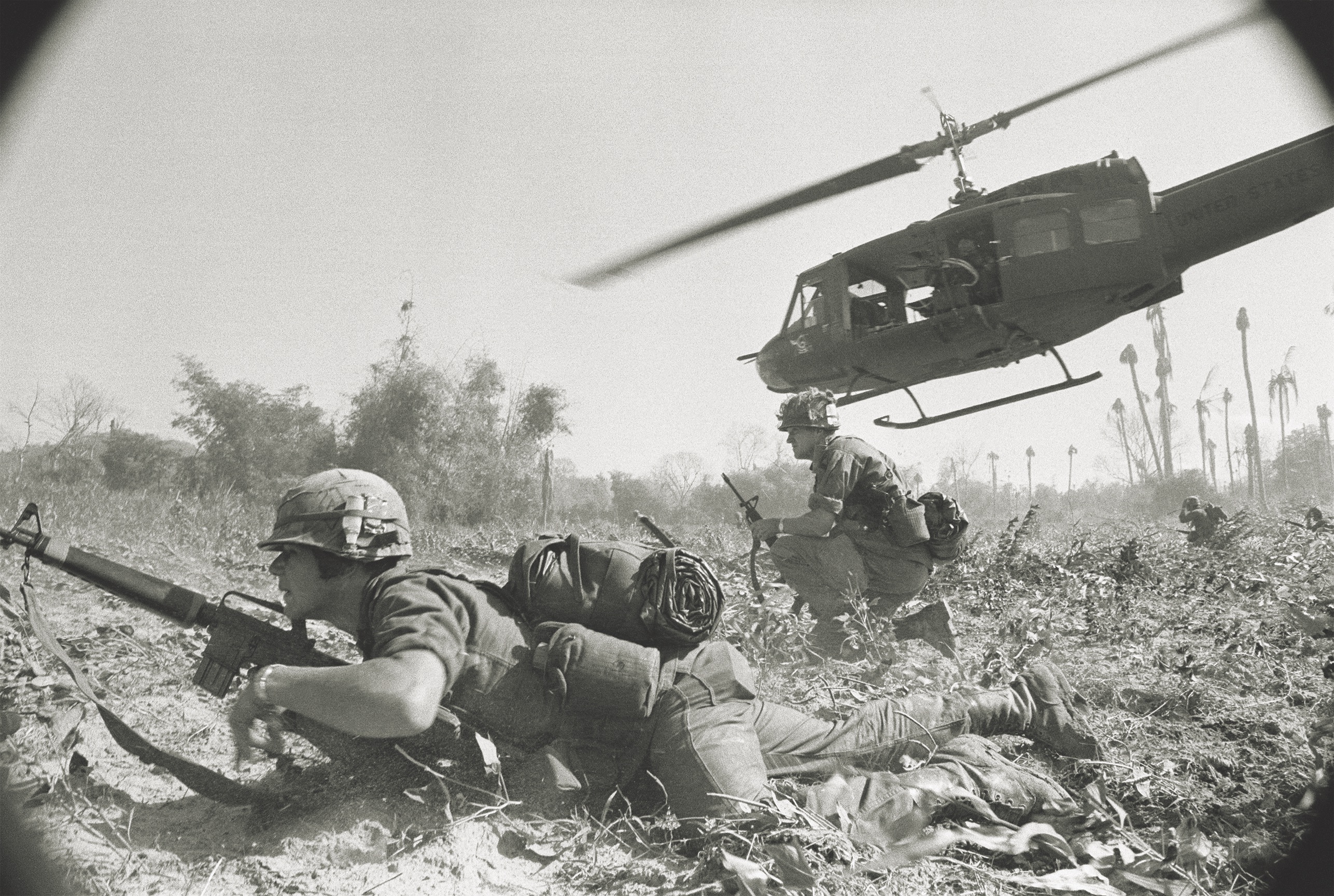
Top American commanders, however, considered their approach to be intelligent warfighting in the context of the Vietnam battlefield. U.S. forces faced an elusive adversary and were tethered to an overall strategy that shunned major assaults aimed at an all-out victory and instead kept American troops primarily in a defensive posture, with aggressive actions usually limited to search-and-destroy patrols. That meant American units were typically forced to fight at a time and place of the enemy’s choosing, placing their men at a distinct disadvantage.
One study found, unsurprisingly, that more than 40 percent of battles occurred when an American unit on the move had been ambushed or encircled or had encountered enemy forces in dug-in or fortified positions. Further, the enemy rarely attacked without a significant numerical advantage. One Viet Cong veteran recalled in Michael Lee Lanning and Daniel Cragg’s Inside the VC and NVA that his unit preferred to avoid contact unless “we were absolutely superior in numbers before starting the attack.” Any sensible U.S. ground commander would welcome fire support in those circumstances.
Moreover, American political and cultural sensitivities all but demanded overwhelming fire support be used when ground troops made contact with the enemy. “In Vietnam, more than any other war in American history,” wrote Maj. Gen. Robert H. Scales Jr. in Firepower in Limited War, “the preservation of soldiers’ lives was the overriding tactical imperative.” So much so that commanders were asked to justify instances when they did not request fire support.
Platoons and companies under fire were advised to resist the urge to assault or outflank the enemy and instead call on artillery and air support. By emphasizing firepower over maneuver, infantry units could inflict maximum damage on the enemy while avoiding unnecessary casualties.
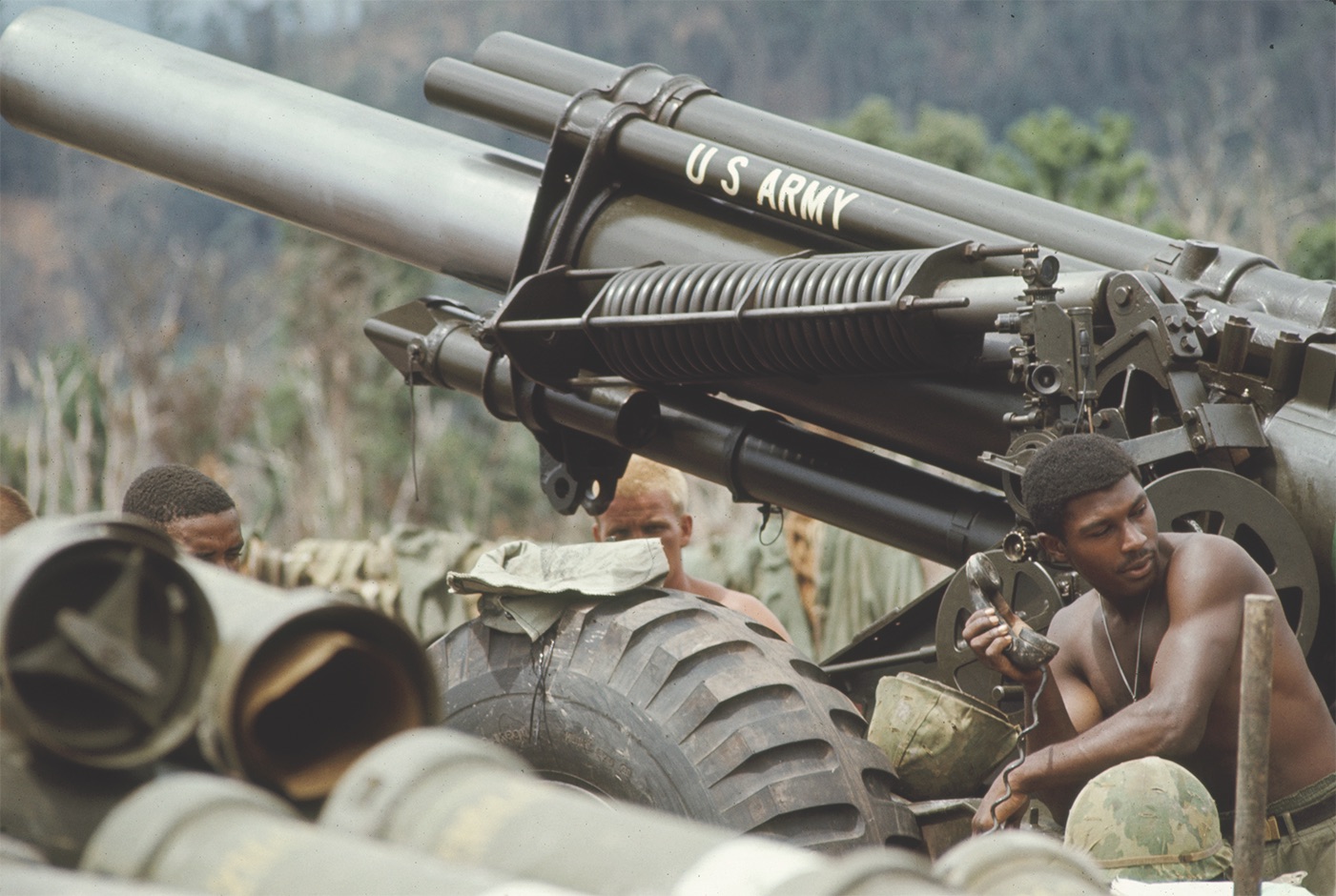
American infantry units were to find and fix the enemy so that firepower could destroy him. Like many officers, Lt. Col. Boyd Bashore admitted that firepower made his job easier. “I’ve been rich and I’ve been poor and believe me, being rich is better,” noted the 25th Infantry Division veteran. “As an infantry commander I have assaulted fortified base camps both ways: the traditional closing with the enemy and the let-the-artillery-and-air-do-it, and believe me, the latter is better.”
Col. Sidney B. Berry agreed. Following an eventful tour as a brigade commander with the 1st Infantry Division in 1966-67, Berry explained in a 1968 article for Military Review that “commanders at all levels should seek the enemy with minimum forces and then use maneuver units to block the enemy’s withdrawal and supporting firepower to destroy him. They should seek to avoid heavy infantry attack on, or engagement in, enemy fortified positions. The key to success…is the massive use of supporting firepower.”
Operations predicated on massive firepower certainly played to American strengths. Far from a stumbling colossus, the U.S. military excelled at highly technical combined-arms warfare.
Lt. Col. George Shuffer, who commanded the 2nd Battalion, 2nd Infantry Regiment, 1st Infantry Division, argued in a December 1967 piece published in Military Review that firepower had displaced troop maneuvers on the battlefield. “In fact, once a battle is joined in Vietnam,” he wrote, “firepower outweighs maneuver as the decisive element of combat power.” Shuffer harnessed the destructive effects of artillery, helicopter gunships and fixed-wing aircraft to defeat a large Viet Cong force near the Mekong Delta town of Nha Mat in in 1965.
Although firepower eventually emerged as the principal instrument of American combat power in Vietnam, some officers—especially early in the war—refused to pull back into a perimeter and instead dispatched troops to assault or outflank the enemy. Far too often, however, those troops would move out, only to become pinned down themselves. Wary of additional maneuvering, yet unable to push through the enemy force, those officers had little choice but to bring in supporting firepower to jump-start the advance or cover a withdrawal.
There were instances when traditional infantry tactics proved decisive on the Vietnam battlefield. In May 1966, two companies from the 1st Battalion, 8th Cavalry Regiment, 1st Cavalry Division (Airmobile), encountered units of the NVA 22nd Regiment in the jungle-covered hills east of the Vinh Thanh Valley in South Vietnam’s Central Highlands. Around sundown the NVA withdrew to defensive positions on a hill some 700 feet away. Fighting well into the night, the Americans charged forward, assaulted the enemy bunkers and overran the position, killing about 60 NVA soldiers.
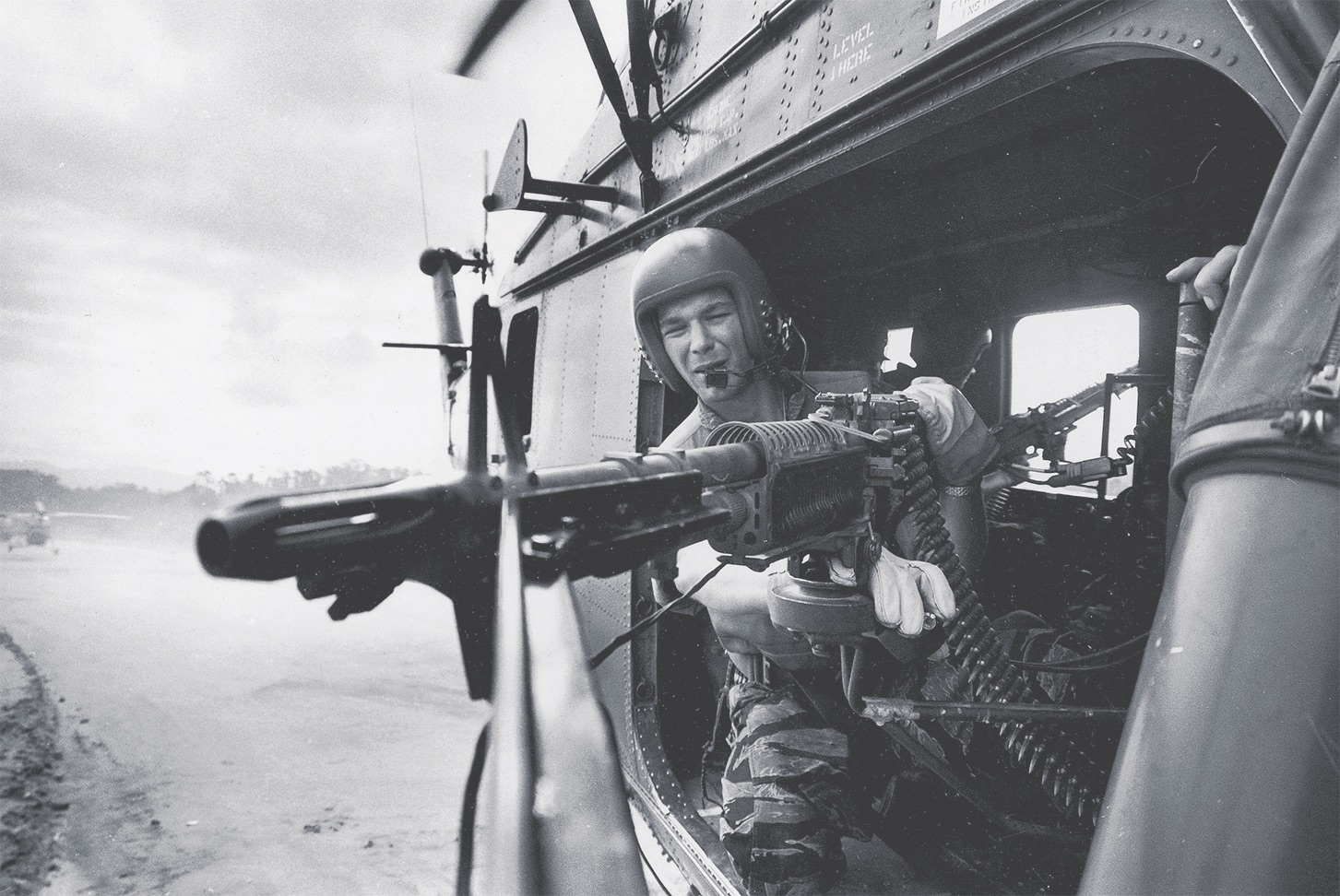
Similarly, the Marines earned a pair of victories in the hotly contested Que Son Valley in northern South Vietnam in 1967 by flawlessly executing “fire and maneuver,” a basic infantry tactic in which one friendly
element suppresses the enemy with fire while another maneuvers to destroy him.
While patrolling the valley that June, India Company of the 3rd Battalion, 5th Marine Regiment, 1st Marine Division, observed about 50 NVA troops, armed with two machine guns, preparing an ambush. The Marines, after establishing a base of fire with two of their own machine guns, quickly dispatched two platoons to envelop the enemy. The Americans killed 30, captured 20 and routed the would-be ambushers—without suffering a single casualty. Later that summer, Lima Company of the 3rd Battalion, 1st Marine Regiment, 1st Marine Division, stormed a hill and killed several dozen North Vietnamese, some in vicious hand-to-hand combat. No Americans were killed in the fighting.
In the spring of 1968, the 2nd Battalion, 4th Marine Regiment, 3rd Marine Division, fought through a blizzard of enemy small-arms, mortar and artillery fire to attack, using “fire and maneuver,” one NVA fighting position after another in and around the village of Dai Do, in northernmost South Vietnam. “The Marines, outnumbered but superbly led and already battle hardened, dug [the NVA] out spiderhole by spiderhole,” wrote Vietnam historian Keith Nolan. The victory at Dai Do may have prevented an NVA assault on the Marine base at Dong Ha, a major supply and logistics center.
American infantrymen clearly were neither unwilling nor incapable of fighting and fighting well in a traditional role using traditional tactical maneuvers. On balance, however, infantry actions alone could never kill the enemy fast enough—and keep friendly casualties low enough—to satisfy the demands of the political leadership in Washington. Firepower provided the only viable means of winning the war at an acceptable cost.
American grunts fought the way their superiors deemed best, just like communist soldiers trained to grab enemy troops “by their belts”— moving in very close to an American unit to discourage the use of airstrikes and artillery fire that would also kill U.S. troops. Hanoi and its commanders in South Vietnam were ruthlessly willing to expend the lives of their soldiers, while Washington was casualty averse. The U.S. favored firepower, not to compensate for a supposedly cowardly and ineffectual infantry, but rather to conserve American lives.
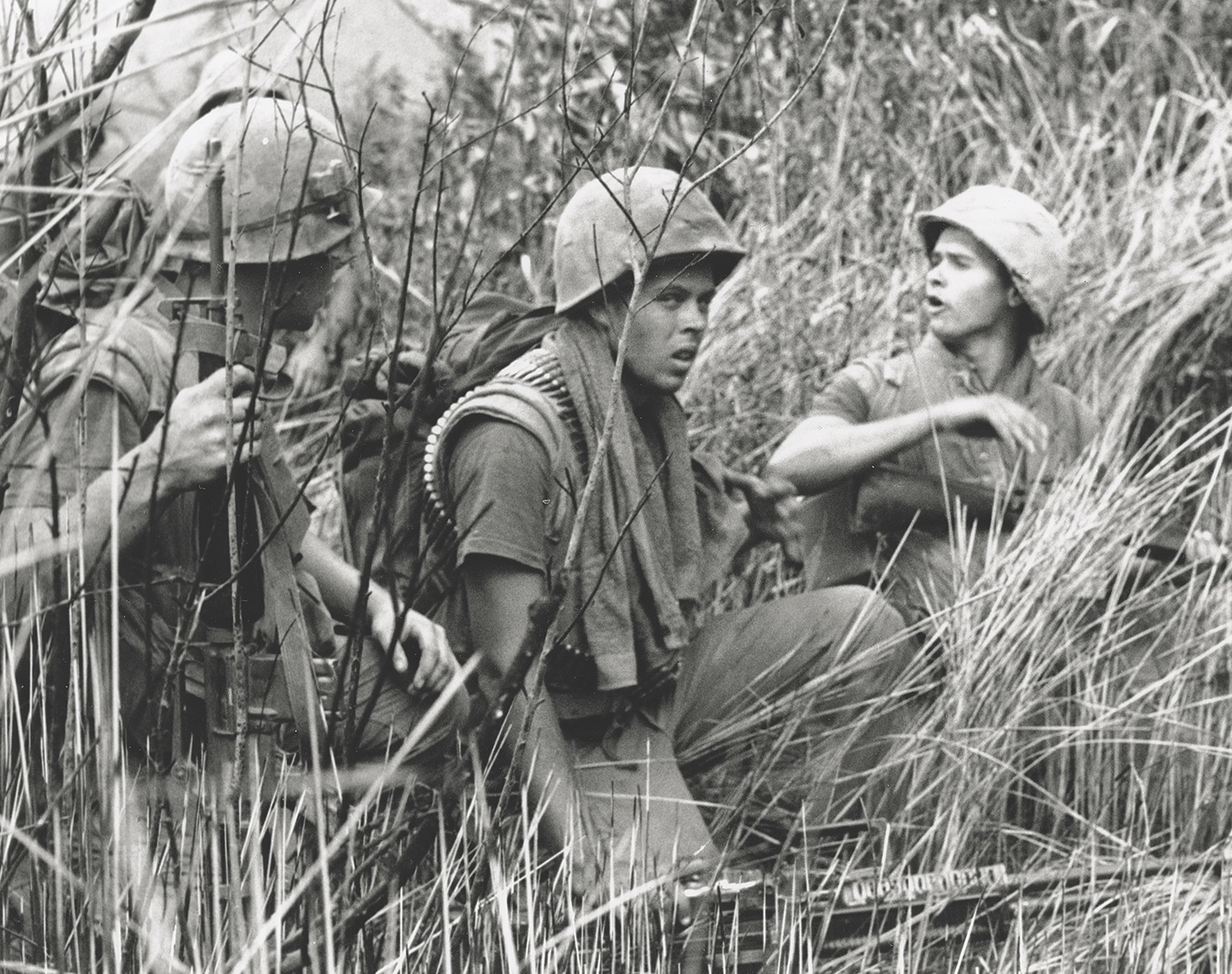
Grunts generally fought well even when the delivery of supporting fire was complicated by circumstances such as dense vegetation, rugged terrain and the enemy’s ability to get close quickly. An excellent example is the performance of the 4th Infantry Division in the Central Highlands in May 1967. Over a nine-day period the division counted 367 dead NVA soldiers, most killed, not by supporting firepower, but by small-arms fire in bitter fighting that produced a 6-1 kill ratio.
“Rather than performing a normal close-in support role,” explained military historian George MacGarrigle, “most of the 31,304 artillery rounds and the 219 tactical air strikes had been used to contain the battle area and hit enemy escape routes.” Col. Charles A. Jackson, commander of the brigade involved in the fighting, later remarked in Edward Hymoff’s Fourth Infantry Division in Vietnam that the battles had been won “within a 50 yard area of heavily jungled terrain where the fighting was man to man, our guys against the bad guys.”
In 1969, the 173rd Airborne Brigade fanned out across the northern districts of Binh Dinh province in South Vietnam’s central coastlands. Dispensing with large search-and-destroy operations backed by overwhelming firepower, small detachments of Sky Soldiers pushed into communist-dominated hamlets, engaged the enemy and quickly improved security in the area.
“The brigade accomplished all this without suffering heavy casualties, although its troops were dangerously dispersed and fought without the full benefit of their superior firepower due to [the operation’s] stringent rules of engagement,” wrote Kevin Boylan, author of a study on the war in Binh Dinh. “When it came to actual combat, the Sky Soldiers consistently outfought their adversaries, even when battling the NVA.” Unfortunately, successful small-unit actions like those of the 173rd Airborne in Binh Dinh have largely been forgotten.
American forces in Vietnam were hardly alone in their use of firepower to support troops in combat against the communists. A company from the 6th Battalion, Royal Australian Regiment, greatly outnumbered and under heavy attack in 1966 at Long Tan northeast of Saigon, requested artillery fire and air support and pulled into a defensive perimeter, much the same way a U.S. Army or Marine company would have responded in similar circumstances. The monsoonlike weather prevented the Australians from calling in airstrikes, but American 155 mm howitzers and Australian and New Zealand 105 mm howitzer batteries pounded the Viet Cong. “The artillery fire support and the arrival of APCs [armored personnel carriers],” wrote Australian historian Jeffrey Grey, “had undoubtedly saved D Company.”
Access to all manner of fire support was as important to the Australian infantry as it was to American grunts. “In keeping with the advantages enjoyed by all allied forces in Vietnam, soldiers in the task force [1st Australian Task Force] often expended prodigious quantities of ammunition, especially in set-piece assaults against bunkers,” Grey added. “They could call on a full suite of fire support options, including helicopter gunships, field, medium, and heavy artillery, fixed wing air support and, on occasion, naval gunfire offshore.”
Australian units routinely summoned supporting fire to destroy enemy bunkers and often turned to tanks in those battles. “In a statistically supported study of 161 engagements in Vietnam that involved fighting against enemy in prepared defenses—especially bunkers,” reported Lt. Gen. John Coates, former chief of the Australian army general staff, “the greatest difference, both in lowering friendly casualties while massively increasing enemy casualties, was brought about by the employment of tanks.”
Acknowledging the advantage of strong fire support in Australian operations certainly does not discredit the character, courage, or skill of the Australian soldier in Vietnam. It does, however, place the relationship between the American soldier and American firepower in context.
South Korean units in Vietnam adopted a similar approach. Highly regarded as hard-fighting, professional soldiers, they nonetheless were “sensitive about keeping casualties down, which resulted in a deliberate approach to operations involving lengthy preparations and heavy preliminary fire,” Gen. William Westmoreland, the top commander of U.S. combat forces in Vietnam, noted in his memoir.
Gen. Creighton Abrams, Westmoreland’s successor at Military Assistance Command, Vietnam, noticed that the South Koreans had a penchant for concentrated firepower. “An example of this would be when they [South Koreans] decided to surround and attack a hill,” Abrams recounted in a study of allied participation in the war. “A task of this sort would take one month of preparation time during which a lot of negotiating would have to be done to get the support of B-52s [bombers], artillery and tanks.”
Abrams, likening the tactics allied forces employed in Vietnam to musical instruments, posited that it was “sometimes appropriate to emphasize the drums or the trumpets or the bassoon, or even the flute.” South Koreans, he added, seemingly preferred the “base drum.” The commander of the South Korean 9th Infantry Division confirmed as much when he conceded that “the concentration of firepower on successive objectives” had been something of a hallmark of his division. The commander argued that enemy forces were to be “neutralized within the ring of encirclement with continuous bombardment to prevent organized resistance.”
South Korean troops involved in Operation Hong Kil Dong, a 1967 assault in the central coastlands, operated under an elaborate umbrella of artillery fire, helicopter gunships and close-air support (244 sorties) throughout the weekslong offensive. Even so, Gen. Yu Byung Hyun, commander of the South Korean Capital Division during the offensive, encouraged his subordinates to be circumspect in their use of firepower to avoid fostering a “psychological dependence on the part of the [ground] units.”
Yu’s remarks reflected the South Koreans’ belief that their forces waged a war that incorporated infantry-intensive operations and energetic “pacification” efforts to win the support of South Vietnamese villagers through security enhancements and social services.
There can be no doubt, however, that firepower assisted the South Koreans in recording body counts and kill ratios on a par with U.S. forces, demonstrating that the Koreans, like the Aussies, were more than willing to use firepower to facilitate operations and reduce casualties.
Interestingly, North Vietnamese commanders Dung and Vu, in their pointed criticism of the American soldier, neglected to note the extent to which the communist Vietnamese used heavy firepower whenever it was available. For example, in 1954, during the fight to free Vietnam from colonial rule, communist-led Viet Minh forces battered the beleaguered French garrison at Dien Bien Phu with 120 mm mortars and 105 mm artillery fire.
“We are all surprised and ask ourselves how the Viets have been able to find so many guns capable of producing an artillery fire of such power,” lamented one French Legionnaire in the acclaimed study Valley of the Shadow: The Siege of Dien Bien Phu. “Shells rained down on us without stopping like a hailstorm on a fall evening. Bunker after bunker, trench after trench collapses, burying under them men and weapons.” Another violent barrage prompted a physician at Dien Bien Phu to consult his watch and exclaim, “They’re firing sixty shells a minute!”
Nor were North Vietnamese gunners along the Demilitarized Zone shy about using the big guns against Americans on the other side of the border. On the evening of March 20, 1967, NVA artillery near the banks of the Ben Hai River running through the DMZ shelled Marine positions at Gio Linh with nearly 500 105 mm howitzer rounds.
Mortars, rockets and larger-caliber guns (130 mm and 152 mm) were eventually deployed to the DMZ, and by July 1967 the North Vietnamese were capable of providing direct fire support to their units fighting in the Con Thien area.
Firing in support of an NVA infantry assault on July 6, communist artillery batteries hammered two Marine battalions just south of the DMZ. One of the U.S. units, the 1st Battalion, 3rd Marine Regiment, 3rd Marine Division, received about 1,000 enemy rounds. NVA artillery fire accounted for half of the 159 Marine deaths and 345 wounded in nearly two weeks (July 2-14) of bitter fighting around Con Thien.
Generously equipped with Soviet tanks and artillery, the North Vietnamese invaded South Vietnam in 1972 with a largely conventional force. Fourteen combat divisions, accompanied by an estimated 1,000 tanks, attacked in northern South Vietnam, in the Central Highlands and at Loc Ninh north of Saigon. Communist forces expended more than 220,000 rounds of artillery, tank and heavy mortar ammunition in that failed offensive, but three years later, the NVA again relied on massed artillery and combined-arms attacks—not local guerrillas armed with outdated rifles—to crush the South Vietnamese army.
In 1978-79, the reunified Socialist Republic of Vietnam made brilliant use of superior numbers, mobility and firepower in a “blitzkrieg-like” invasion of Cambodia. Tanks, artillery, naval gunfire and even airstrikes delivered by captured American fighter-bombers were employed without hesitation against the outnumbered and outgunned Khmer Rouge rulers of Cambodia. It is doubtful that any Vietnamese officer would judge the Khmer Rouge superior to his own troops simply because this time the enemy had to fight without the fire support available to Vietnamese forces.
When assessing an infantryman’s combat capabilities, access to firepower is not the only thing that matters. Another consideration is the length of time individual soldiers are required to serve in a combat zone. Communist soldiers in Vietnam understood that their battlefield service would end in victory—or death.
“I only knew that as long as I lived I would have to fight the war,” said one VC private in Lanning and Cragg’s book on the NVA and VC. American infantry served tours of either 12 (Army) or 13 (Marines) months. It is impossible to know, of course, if a fixed tour would have affected the NVA and Viet Cong. On the other hand, it is not difficult to imagine a communist short timer “playing it safe,” as American grunts often did in the final days or weeks of their combat tour.
By any objective measure, the American soldier and Marine fought courageously and effectively in Vietnam and deserves a more memorable tribute than many have accorded him.
Warren Wilkins writes about the Vietnam War in books and magazine articles.

